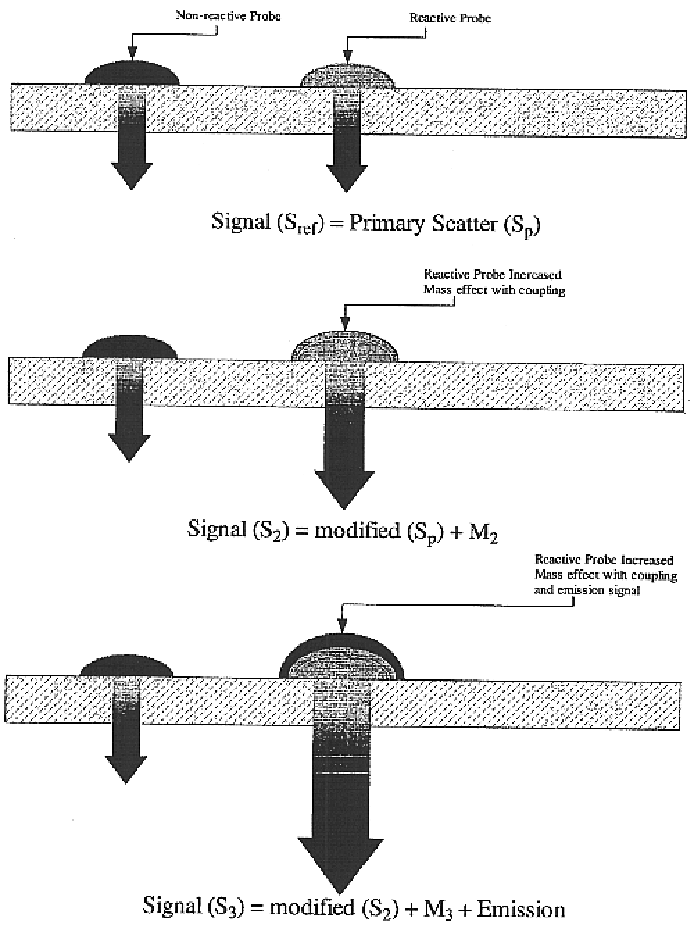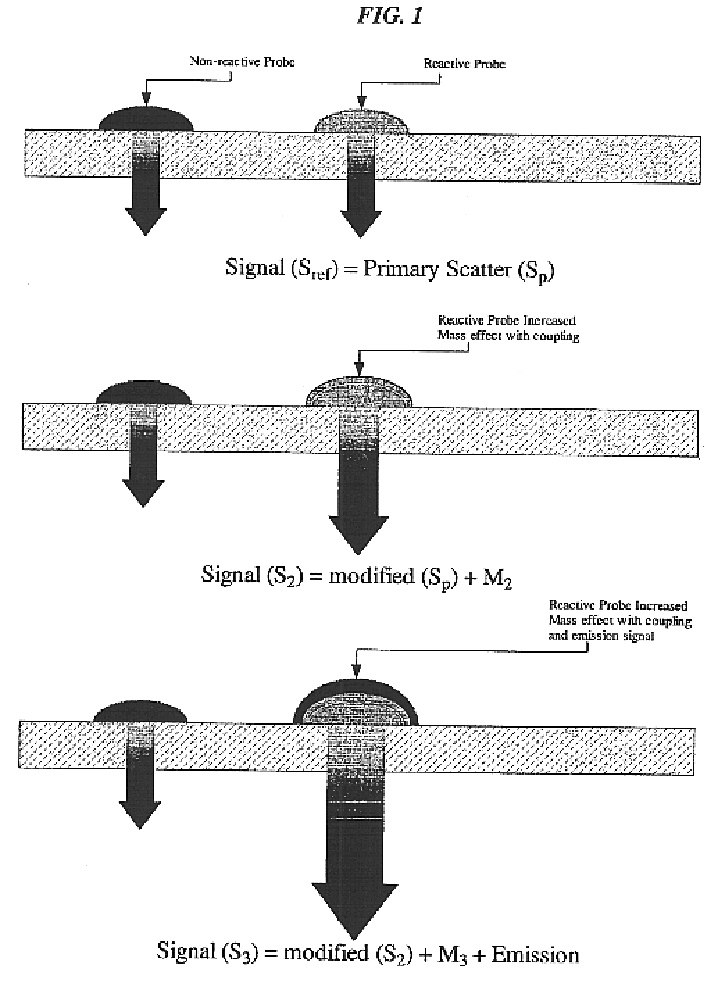Translucent solid matrix assay device for microarray analysis
a solid matrix and microarray technology, applied in the field of microarray analysis, can solve the problems of inability to change or adapt to conduct any test, complex structure of existing microarrays, and more difficult to attach proteins to solid matrix
- Summary
- Abstract
- Description
- Claims
- Application Information
AI Technical Summary
Benefits of technology
Problems solved by technology
Method used
Image
Examples
Embodiment Construction
Definitions
Terms that are not otherwise defined herein are used in accordance with their plain and ordinary meaning.
As used herein, “a” or “an” may mean one or more than one of an item.
As used herein, the terms “analyte” and “target” mean any compound, molecule or aggregate of interest for detection. Non-limiting examples of targets include a protein, peptide, carbohydrate, polysaccharide, glycoprotein, lipid, hormone, growth factor, cytokine, receptor, antigen, allergen, antibody, substrate, metabolite, cofactor, inhibitor, drug, pharmaceutical, nutrient, toxin, poison, explosive, pesticide, chemical warfare agent, biowarfare agent, biohazardous agent, infectious agent, prion, radioisotope, vitamin, heterocyclic aromatic compound, carcinogen, mutagen, narcotic, amphetamine, barbiturate, hallucinogen, waste product, contaminant, heavy metal or any other molecule or atom, without limitation as to size. “Targets” are not limited to single molecules or atoms, but may also comprise comp...
PUM
| Property | Measurement | Unit |
|---|---|---|
| diameter | aaaaa | aaaaa |
| size | aaaaa | aaaaa |
| size | aaaaa | aaaaa |
Abstract
Description
Claims
Application Information
 Login to View More
Login to View More - R&D
- Intellectual Property
- Life Sciences
- Materials
- Tech Scout
- Unparalleled Data Quality
- Higher Quality Content
- 60% Fewer Hallucinations
Browse by: Latest US Patents, China's latest patents, Technical Efficacy Thesaurus, Application Domain, Technology Topic, Popular Technical Reports.
© 2025 PatSnap. All rights reserved.Legal|Privacy policy|Modern Slavery Act Transparency Statement|Sitemap|About US| Contact US: help@patsnap.com


